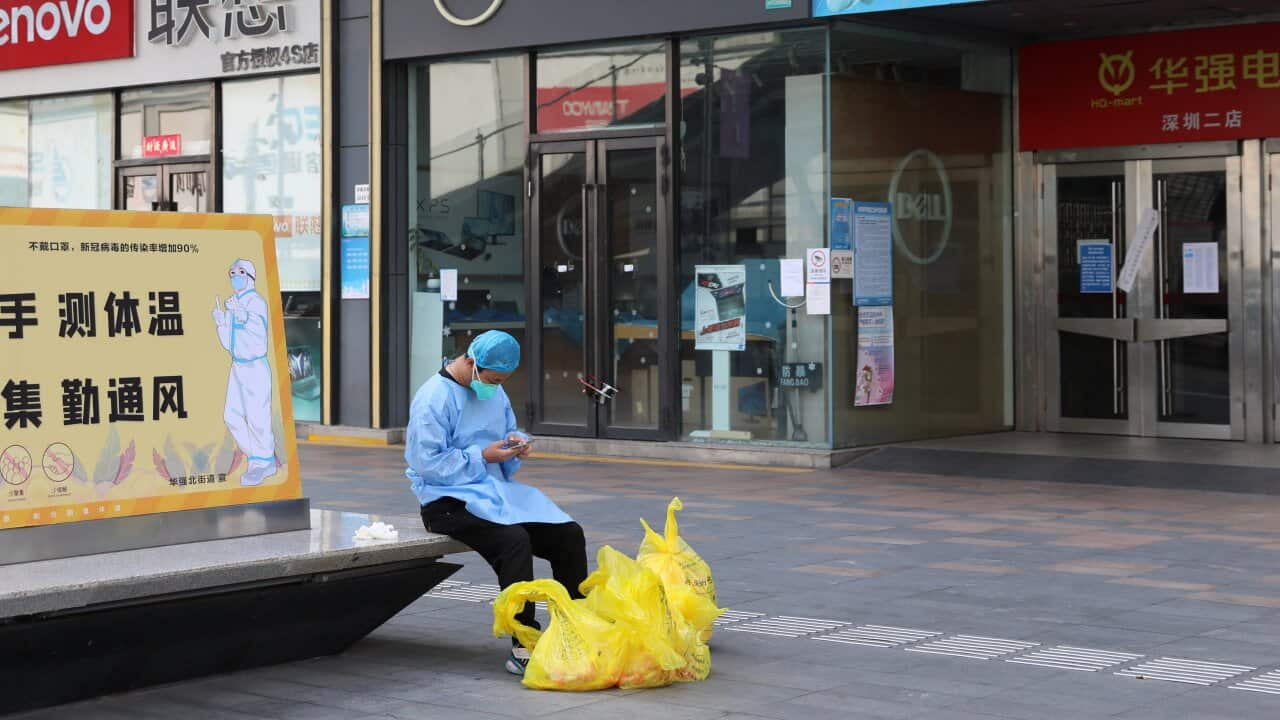Case numbers in China are rising, and the entire city of Shenzen, population 17 million, is in lockdown.
The northeastern province of Jilin was worst hit, accounting for more than 3,000 cases, according to the National Health Commission.
Since the coronavirus first emerged in the central city of Wuhan in late 2019, China had successfully suppressed large-scale outbreaks through its strict "zero-Covid" strategy, which involved hard lockdowns that confined huge sections of the population to their homes.
But Tuesday was the sixth day in a row that more than 1,000 new cases were recorded in the world's second-biggest economy.
At least 11 cities and counties nationwide have been locked down because of the latest surge.
Hong Kong stocks plunged by more than three per cent on Tuesday, extending the previous day's tech-fuelled rout.
Dozens of domestic flights at airports in Beijing and Shanghai were cancelled on Tuesday morning, flight tracking data showed.
An outbreak at Volkswagen Group factories in the Jilin city of Changchun also prompted three sites to shut Monday for at least three days, according to a spokesman.

Shenzhen imposed the lockdown to counter an Omicron flare-up in factories and neighbourhoods linked to nearby Hong Kong. Source: AAP / AP
But health officials have warned tighter restrictions could be on the way.
Jilin's governor vowed to go all-out to "achieve community zero-Covid in a week" during an emergency meeting Monday night, state media reported.
Residents of Jilin, which is on the border with North Korea, were banned from travelling out of and around the province Monday.

Health workers and police wearing protective equipment in Shanghai. Residential areas and offices in some neighbourhoods remained sealed on Monday as city authorities try to avoid a full lockdown. Source: AAP, EPA / Alex Plaveski
Health official Lei Zhenglong told state broadcaster CCTV that more than 10,000 domestic infections had been recorded in March so far across dozens of provinces, and warned the situation in many areas was "still developing".
While the caseload is low in global terms, it is deeply alarming in China where authorities have been unrelenting in squashing clusters since early 2020.

A man walks across an empty road during the fourth day of a city-wide lockdown in Changchun in northeastern China's Jilin province on Monday, 14 March, 2022. Source: AAP / AP
China has so far managed to control sporadic domestic outbreaks through a combination of snap lockdowns, mass testing and travel restrictions, but the latest outbreak is testing the limits of its playbook.










